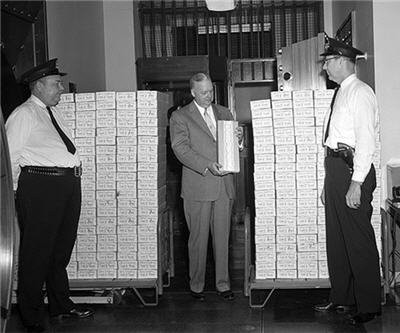
The gold price let go of the psychologically important $1,250 level on Tuesday, giving up $5.70 an ounce to settle at $1,245.40 on the day.
Gold received a boost on Friday after a surprisingly weak US jobs report that showed labour participation rates at levels last seen in 1978.
The jobs shocker was interpreted as forcing the Federal Reserve to keep interest rates near zero for longer than anticipated, hurting the dollar and boosting gold in return.
But on Tuesday two noted Fed hawks poured cold water on any backpedaling on the taper process that kicked off in December with a $10 billion reduction in monthly bond buying.
Charles Plosser, president of the Philadelphia Federal Reserve, said asset purchases running at $75 billion a month, should be wound down sooner than the end of the year, while Dallas President Richard Fisher said he wanted the taper to be double the size it was, that is $20 billion.
A negative in the market remains continued outflows from gold-backed exchange traded funds.
Holdings of the world’s largest gold ETF – SPDR Gold Shares (NYSEARCA:GLD) – dropped more than 3 tonnes on Tuesday and outflows for the year total 8.7 tonnes. At 789.6 tonnes GLD holdings are at the lowest level since January 2009 after a whopping 552 tonnes left the fund last year.
The Wall Street Journal reports that the strength seen in 2014 could be because certain investors are buying gold “simply to track two of the world’s most closely followed commodity indexes, the Dow Jones UBS Commodity Index and the S&P GSCI:”
Both indexes are carrying out an annual adjustment to their commodity holdings to reflect changes in production and liquidity, or ease of trading. This year, the DJ-UBS index will raise its gold allocation to 11.53% from 10.82%, while the S&P GSCI will trim its gold allocation to 2.80% from 2.81% last year. Funds that follow either index will need to buy gold to match the new weights, as gold’s declines eroded the value of both allocations.
The paper quotes Bart Melek, head of commodity strategy at TD Securities, as saying index rebalancing “will lead to additional purchases of the equivalent of 1.97 million ounces of gold, or about 2.2% of the annual output of gold mines.”
The price of of gold ended 2013 down 28% at a shade over $1,200 an ounce, bringing a 12-year bull run that took it from around $270 an ounce at the end of 2000 to a record high above $1,900 in September 2011 to a decisive end.